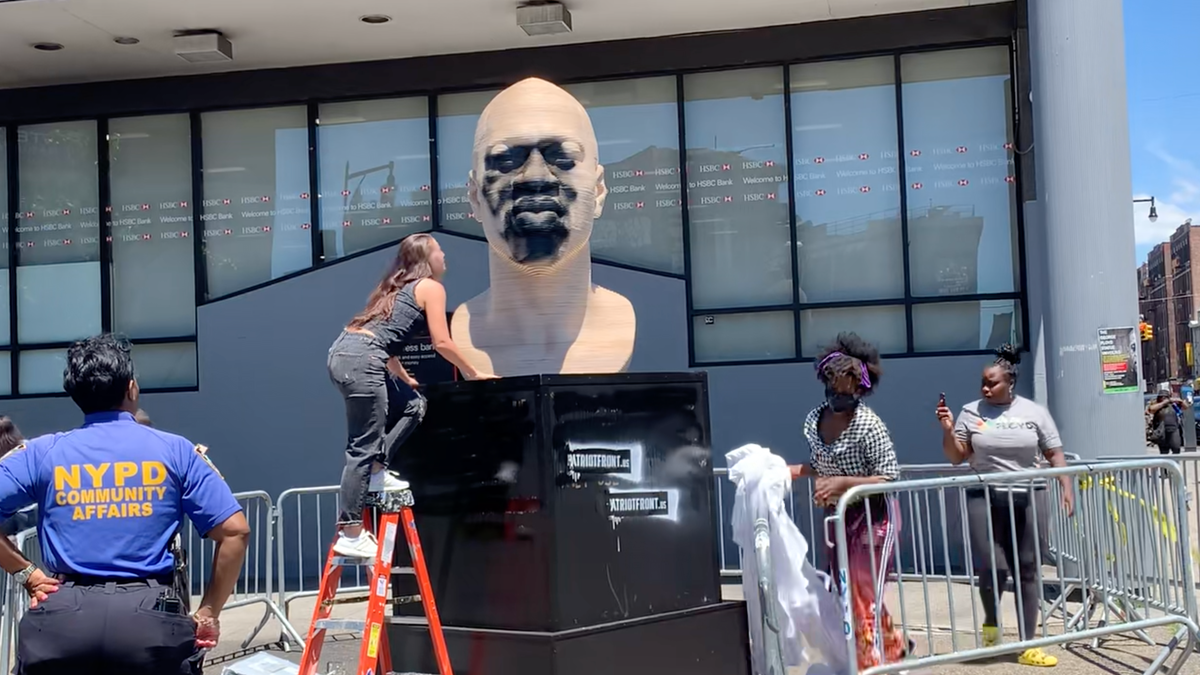political memo
A yearslong challenge for the left was starkly illustrated this week as its hopes faded in the New York mayor’s race.

June 26, 2021, 5:00 a.m. ET
Can progressives win broad numbers of the Black and brown voters they say their policies will benefit most?
That provocative question is one that a lot of Democrats find themselves asking after seeing the early results from New York City’s mayoral primary this past week.
In a contest that centered on crime and public safety, Eric Adams, who emerged as the leading Democrat, focused much of his message on denouncing progressive slogans and policies that he said threatened the lives of “Black and brown babies” and were being pushed by “a lot of young, white, affluent people.” A retired police captain and Brooklyn’s borough president, he rejected calls to defund the Police Department and pledged to expand its reach in the city.
Black and brown voters in Brooklyn and the Bronx flocked to his candidacy, awarding Mr. Adams with sizable leading margins in neighborhoods from Eastchester to East New York. Though the official winner may not be known for weeks because of the city’s new ranked-choice voting system, Mr. Adams holds a commanding edge in the race that will be difficult for his rivals to overcome.
His appeal adds evidence to an emerging trend in Democratic politics: a disconnect between progressive activists and the rank-and-file Black and Latino voters who they say have the most to gain from their agenda. As liberal activists orient their policies to combat white supremacy and call for racial justice, progressives are finding that many voters of color seem to think about the issues quite a bit differently.
“Black people talk about politics in more practical and everyday terms,” said Hakeem Jefferson, an assistant professor of political science at Stanford University who studies the political views of Black people. “What makes more sense for people who are often distrustful of broad political claims is something that’s more in the middle.”
He added: “The median Black voter is not A.O.C. and is actually closer to Eric Adams.”
In the 2016 Democratic presidential primary race, Senator Bernie Sanders struggled to win over voters of color. Four years later, Black voters helped lift President Biden to victory in the Democratic primary, forming the backbone of the coalition that helped him defeat liberal rivals including Mr. Sanders and Senator Elizabeth Warren.
In the general election, Donald J. Trump made gains with nonwhite voters, particularly Latinos, as Democrats saw a drop-off in support that cost the party key congressional seats, according to a postelection autopsy by Democratic interest groups. In the 2020 election, Mr. Trump made larger gains among all Black and Latino voters than he did among white voters without a college degree, according to the Democratic data firm Catalist.
On issues beyond criminal justice, data indicates that Black and Latino voters are less likely to identify as liberal than white voters. An analysis by Gallup found that the share of white Democrats who identify as liberal had risen by 20 percentage points since the early 2000s. Over the same period, the polling firm found a nine-point rise in liberal identification among Latino Democrats and an eight-point increase among Black Democrats.
As votes were being tabulated in New York, Mr. Adams tried to capitalize on that tension between progressives and more moderate voters of color, casting himself as the future of Democratic politics and his campaign as a template for the party.
“I am the face of the new Democratic Party,” he said at his first news conference after primary night. “If the Democratic Party fails to recognize what we did here in New York, they’re going to have a problem in the midterm elections and they’re going to have a problem in the presidential elections.”
Extrapolating national trends from the idiosyncratic politics of New York is a bit like ordering a bagel with schmear in Des Moines. You’ll probably get a piece of bread, but the similarities may end there.
Liberal activists argue that they’ve made important breakthroughs among nonwhite voters in recent years, pointing to Mr. Sanders’s gains among Latinos and younger voters of color over the course of his two presidential bids. Progressive congressional candidates, like the members of the so-called Squad, have won several heavily Democratic House districts with meaningful support from nonwhite voters.
And of course, Black and Latino voters, like any demographic group, are hardly a monolith. Younger voters and those with college degrees are more likely to trend left than their older parents.
Still, the traction some more conservative Democratic candidates like Mr. Adams have gained in Black and Latino communities threatens to undercut a central tenet of the party’s political thinking for decades: demographics as destiny.
For years, Democrats have argued that as the country grew more diverse and more urban, their party would be able to marshal a near-permanent majority with a rising coalition of voters of color. By turning out that base, Democrats could win without needing to appeal affluent suburbanites, who are traditionally more moderate on fiscal issues, or white working-class voters, who tend to hold more conservative views on race and immigration.
But a growing body of evidence indicates that large numbers of Black and Latino voters may simply take a more centrist view on the very issues — race and criminal justice — that progressives assumed would rally voters of color to their side.
The New York mayoral primary provided a particularly interesting test case of that kind of thinking. As crime and gun violence rise in New York, polls showed that crime and public safety were the most important issues to voters in the mayoral race.
The limited public polling available showed nuanced opinions among voters of color on policing. A poll conducted for the Manhattan Institute, a conservative think tank, found that just 17 percent of Black voters and 18 percent of Latinos wanted to decrease the number of police officers in their neighborhoods. But 62 percent of Black voters and 49 percent of Latino voters said they supported “defunding” the New York Police Department and spending the money on social workers instead, the poll found.
Other surveys found that Black and Latino voters were more likely than white voters to say that the number of uniformed police officers should be increased in the subways and that they felt unsafe from crime in their neighborhoods. Fears of violent crime led some leaders in predominantly Black neighborhoods to reject efforts to defund the police.
Progressive activists who backed Maya Wiley, one of the more liberal candidates in the race, accused Mr. Adams of “fear-mongering” over rising crime rates in the city.
“Voters were offered a false dichotomy between justice and public safety by the Adams rhetoric,” said Sochie Nnaemeka, the New York state director of the Working Families Party. “We worked hard to dismantle that framework, but that dog-whistling does strike the real fear that people have when our streets are increasingly unsafe. It’s a very human experience.”
Yet Mr. Adams’s personal history may offer particular appeal to voters with complicated views on criminal justice. A former police officer, he built his political brand on criticizing the police, speaking out against police brutality, and, later, the department’s stop-and-frisk tactics. After years in New York politics, he’s a member of the party establishment, enjoying the advantages of name recognition and decades-old relationships with community leaders.
It’s the kind of biographical narrative likely to appeal to voters more likely to have intimate personal experiences with policing, who tend to live in neighborhoods that may have more crime but where people are also are more likely to face violence or abuse from officers.
Some scholars and strategists argue that Black and Latino voters are more likely to center their political beliefs on those kinds of experiences in their own lives, taking a pragmatic approach to politics that’s rooted less in ideology and more in a historical distrust of government and the ability of politicians to deliver on sweeping promises.
“These standard ways of thinking about ideology fall apart for Black Americans,” Dr. Jefferson said. “The idea of liberalism and conservatism just falls to the wayside.”
He added, “It’s just not the language Black folks are using to organize their politics.”
Nate Cohn contributed reporting.

 3 years ago
506
3 years ago
506










 English (US) ·
English (US) ·